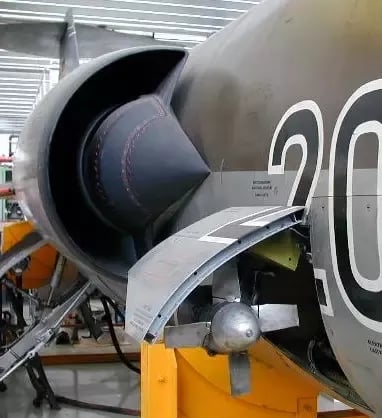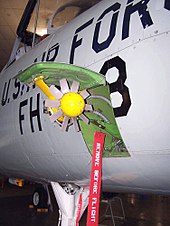Ram Air Turbine
Fact for 23/6/2021
FACTS
A ram air turbine (RAT) is a small wind turbine that is connected to a hydraulic pump, or electrical generator, installed in an aircraft and used as a power source. The RAT generates power from the airstream by ram pressure due to the speed of the aircraft.
It is used while emergency situations to power up essential instruments and hydraulics for a period of time


Operation


Modern aircraft generally use RATs only in an emergency. In case of the loss of both primary and auxiliary power sources the RAT will power vital systems (flight controls, linked hydraulics and also flight-critical instrumentation).[1] Some RATs produce only hydraulic power, which is in turn used to power electrical generators.
Argus As 410 engine and propeller spinner
In some early aircraft (including airships), small RATs were permanently mounted and operated a small electrical generator or fuel pump. Some constant-speed propellers, such as those of the Argus As 410 engines used in the Focke-Wulf Fw 189, used a propeller turbine on the spinner to power a self-contained pitch governor controlling this constant speed.
Modern aircraft generate power in the main engines or an additional fuel-burning turbine engine called an auxiliary power unit, which is often mounted in the rear of the fuselage or in the main-wheel well. The RAT generates power from the airstream due to the speed of the aircraft. If aircraft speeds are low, the RAT will produce less power. In normal conditions the RAT is retracted into the fuselage (or wing), and is deployed manually or automatically following complete loss of power. In the time between power loss and RAT deployment, batteries are used


RATs are common in military aircraft which must be capable of surviving sudden and complete loss of power.
In other military uses, pod-fitted systems such as the M61A1 Vulcan cannon or high-powered electronics such as the AN/ALQ-99 jamming system can be powered by a RAT in standard operation. This allows their installation on a standard hardpoint, without requiring a pod-specific power supply. Also, some free-fall nuclear weapons, such as the British Yellow Sun and Red Beard, used RATs to power radar altimeters and firing circuits; these were a more reliable alternative to batteries
Source - Wikipedia
